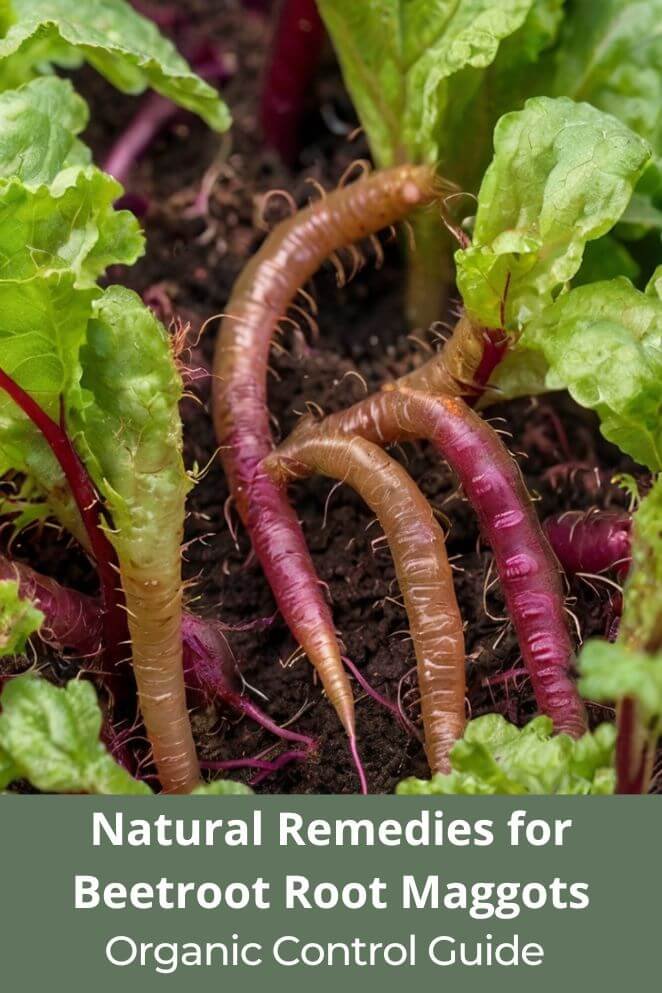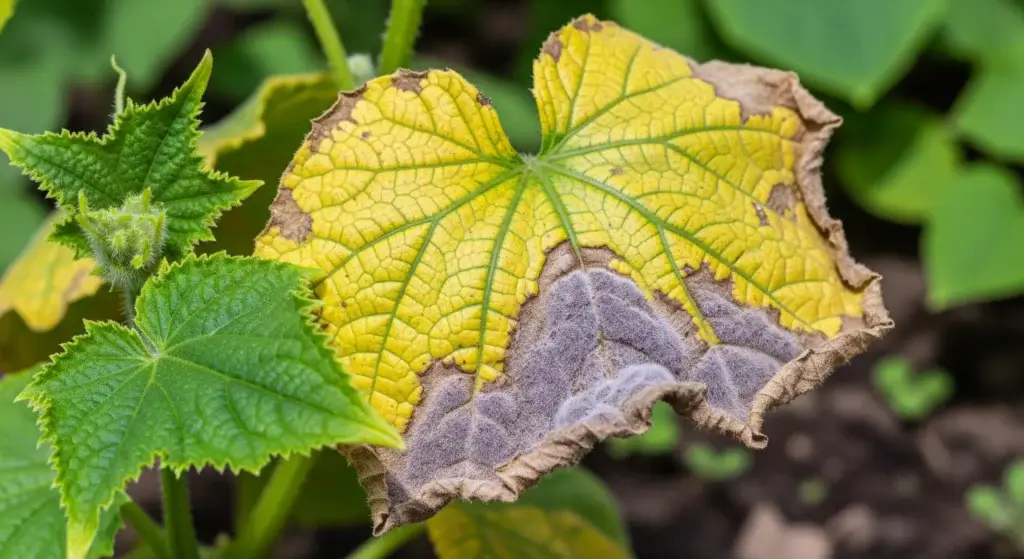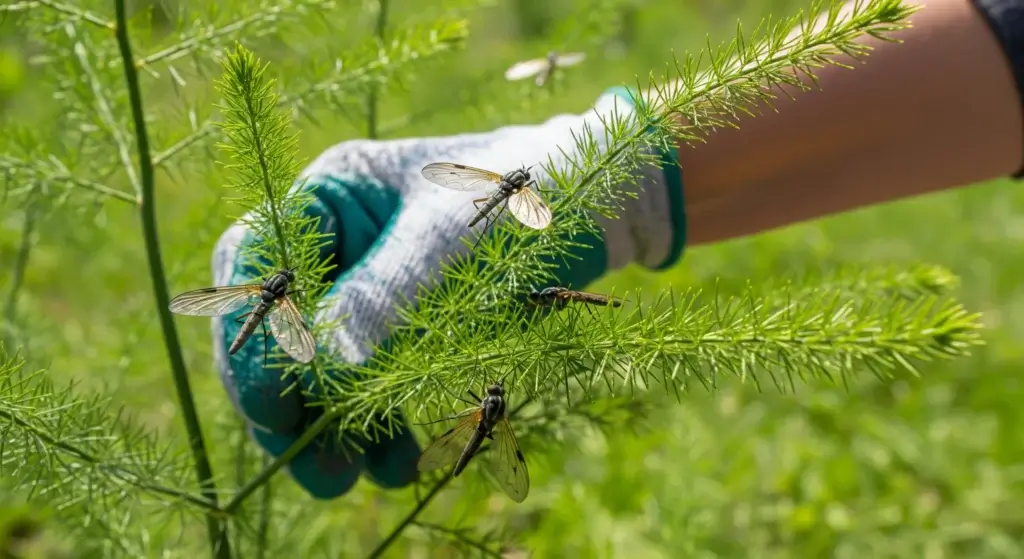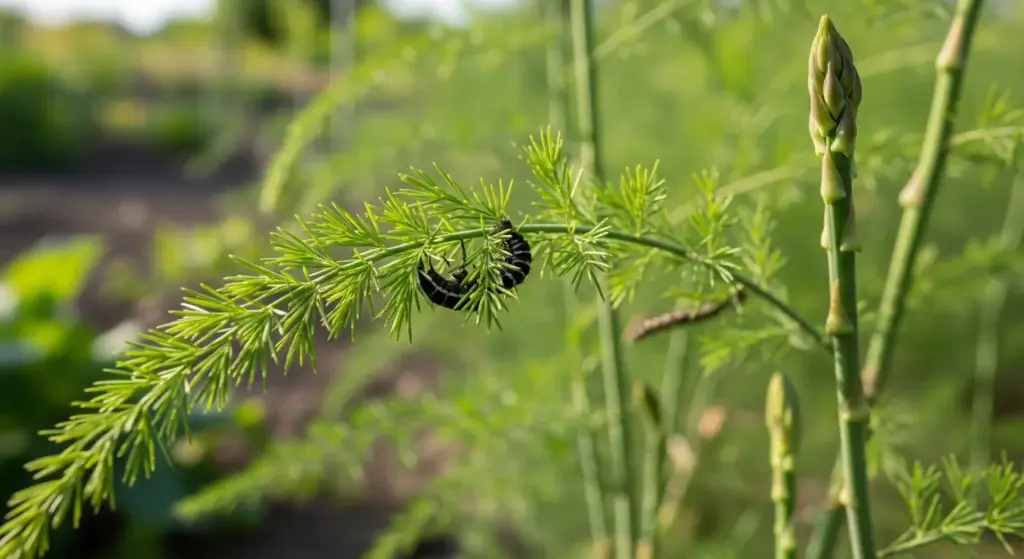
Growing beets is super satisfying—until root maggots show up and ruin everything.
These tiny white larvae burrow into your beets, leaving them hollow, gross, and basically useless.
If you’re growing organic, pesticides are off the table.
But you’ve still got solid, natural ways to fight back.
This guide covers real, proven methods to keep your beets healthy and your garden maggot-free—without messing with your soil or your conscience.
Identifying Root Maggot Damage
Root maggots don’t show up with a sign—they sneak in and slowly wreck your beets.
The earlier you catch the damage, the better your chances of saving the rest.
Here’s what to look for:
- Sad-looking plants – If your beet greens start yellowing, wilting, or just stop growing even though you’re watering and feeding them right, something’s off underground.
- Weird root shapes – If the plants look fine above ground but are growing all funky below, root maggots might be the reason.
- Soft, brown spots – Poke your beets. If parts feel mushy or look brown, that’s a red flag.
- Tiny tunnels or holes – Slice open a harvested beet and you might see winding tracks inside. That’s root maggot damage.
- Gross smell – If the plant or soil smells off, like something’s rotting, bacterial infections probably followed the maggot damage.
- Plants pull out too easily – Healthy beets grip the soil. If one yanks out with barely any effort, the roots are probably shot.

Natural Prevention Strategies: Your First Line of Defense
When it comes to root maggots, prevention is way easier than cleanup.
Here’s how to stop them before they move in:
Timing and crop rotation
Root maggot flies show up in early spring to lay eggs.
Beat them by planting beets later—wait until temps hit 70°F (21°C), usually late spring or early summer. No eggs, no maggots.
And don’t grow beets (or their cousins like spinach, chard, or radish) in the same spot year after year.
Maggot larvae can chill in the soil over winter, so give that bed a break for at least 3 years.
Rotation messes with their life cycle.
Physical barriers and row covers
Row covers are your garden’s bug-proof hoodie.
Lay them down right after planting and pin the edges tight so flies can’t sneak underneath.
Take them off once your plants are strong and past the risky stage.
Want to go extra? Cut 4-inch cardboard or tar paper circles, slice to the center, and slip them around your beet stems like little collars.
It stops flies from laying eggs at the base.
Soil management and health
Good soil = strong plants = fewer problems.
- Make sure your soil drains well. Maggots love soggy spots.
- Add compost and microbial blends to boost soil health. These helpful microbes compete with the bad guys and toughen up your plants naturally.
Companion Planting: Nature’s Pest Control System
If you’re tired of root maggots wrecking your beets, let plants do some of the work.
Certain herbs, flowers, and cover crops can confuse, repel, or attract the right bugs to keep your soil drama-free.
Alliums
Plant onions, garlic, chives, scallions, leeks—basically anything from the allium family—near your beets.
Their strong smell throws off root maggot flies. They’re called “stinking lilies” for a reason, and in this case, stink = defense.
Drop them between beet rows or scatter them throughout the bed. It works like natural bug spray.
Herbs
Herbs like rosemary, thyme, and sage smell amazing to us but completely mess with a fly’s ability to sniff out beets.
Their oils mask the scent signals that tell flies, “Hey, lay eggs here.”
Mix these herbs into your beet beds or border them around the edges.
Living mulch systems
If you’ve had trouble with sugar beet root maggots, try planting beets into a bed of oats.
The oats act like a green blanket—blocking pests, holding moisture, and improving the soil.
Other great options: clover and winter rye.
They support helpful bugs like predatory beetles and parasitic wasps that eat maggot larvae. Plus, they look good and reduce weeds.
Beneficial flower companions
Plant marigolds, nasturtiums, or alyssum around your beet patch.
These flowers bring in the heavy hitters—beneficial insects that snack on root maggot eggs and larvae.
Bonus: they make your garden look less like a science project and more like a magazine spread.

Direct Treatment Methods: Natural Solutions That Work
Sometimes prevention isn’t enough.
If root maggots sneak in anyway, here are some natural treatments that work without wrecking your soil or killing the good bugs.
Diatomaceous earth applications
Dust food-grade diatomaceous earth around the base of young beet plants.
It’s a fine powder that slices up soft-bodied pests like tiny glass shards—sounds harsh, but it’s effective.
- Use a light layer, not a mountain.
- Reapply after rain or watering.
- Don’t use pool-grade DE—it’s not safe for your soil crew (like earthworms or microbes).
Beneficial nematodes
These tiny roundworms (like Heterorhabditis or Steinernema) hunt down and kill root maggot larvae underground.
No chemicals, no mess—they just get the job done.
- Mix them with water and apply with a watering can or sprayer.
- Keep the soil moist after application.
- Best used when soil is between 55–85°F (13–29°C).
Natural repellent sprays
You can make your own sprays with stuff from the kitchen:
- Oil + soap mix: 2 cups veggie oil + 2 tablespoons dish soap → dilute with water. This smothers larvae and messes with egg-laying.
- Garlic + hot pepper spray: Blend garlic and chili, strain, and mix with water. Spray around plants (not directly on leaves during hot days).
They won’t magically fix everything overnight, but they give your plants a fighting chance without chemicals.
Advanced Organic Control Methods
If your beets are under full attack and basic methods aren’t cutting it, these advanced organic strategies can help—without breaking your soil or your ethics.
Trap crops and decoy plants
Plant radishes or turnips around your beets. Maggot flies love them even more, so they’ll lay eggs there instead.
Once the larvae show up, pull and trash the trap plants before they mature.
Don’t compost them—you’ll just spread the problem.
Want long-term protection? Keep a dedicated trap crop zone at the garden edge all season.
It works like a bug magnet that protects your real crops.
Beneficial insect habitat
Predators like ground beetles, rove beetles, and parasitic wasps are your cleanup crew.
Give them what they need:
- Mix in different flowers and perennials to attract and feed them.
- Add beetle banks—basically small mounds planted with native grasses or low-growing herbs—to give them a safe place to hang out and overwinter.
Soil amendments and pH management
Root maggots don’t like alkaline soil. Aim for a pH between 7.0 and 7.5—your beets will still grow fine, but the maggots won’t.
- Use lime or wood ash to slowly raise the pH.
- Test the soil often to avoid going too far.
- Keep moisture steady—wild swings in watering can stress plants and make them easier targets.

Final Thoughts: Keep It Organic, Keep It Steady
Beating root maggots isn’t about one big fix—it’s a mix of smart timing, healthy soil, and knowing what’s happening in your garden.
Start with basics like crop rotation and companion planting.
Add treatments like DE, nematodes, or trap crops if needed.
Build up beneficial insect habitats and tweak your soil to stay one step ahead.
And don’t rush it. Natural pest control takes time.
Pay attention, stay consistent, and adjust based on what’s working in your space.
Your beets—and your soil—will thank you.



